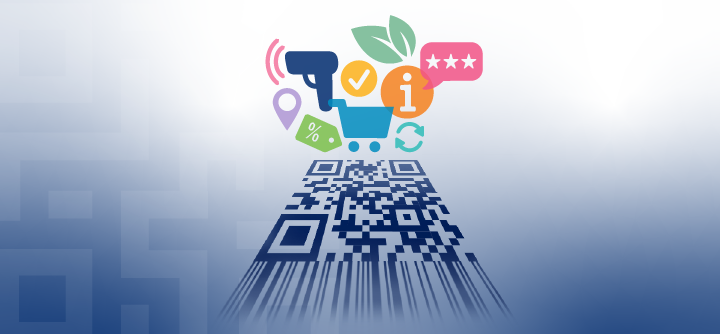Supporting the transition to 2D barcodes - Introducing Klaeri Schelhowe
The transition to 2-Dimensional (2D) barcodes
The transition to 2D barcoding is a huge step forward with substantial benefits for GS1 members globally.
Traditional point-of-sale linear (‘1D’) barcodes have in ~50 years transformed the world of commerce. But EAN-13 or UPC barcodes have always been limited in the amount of information they can carry. By contrast, 2D barcodes can hold substantially more data, including production attributes such as best-before dates/batch number, weblinks, weight and price…the list goes on. GS1 New Zealand has aligned with the global strategy for a 2027 “Sunrise” date for the use of 2D barcodes at point of sale in retail. This transition is supported by major corporate retailers and international brand owners such as L’Oreal, Alibaba, Procter & Gamble, Lidl and more – representing over 80% of global gross domestic product.
How you can benefit from 2D barcodes
The implementation of 2D barcodes is already driving operational improvements in manufacturing and supply chains. Encoding batch and date/time data is facilitating better targeting of recalls and reducing food waste (Woolworths is already reporting ~40% reduction). This is great for suppliers, consumers and the planet. For consumers, 2D barcodes can offer a richer shopping experience, providing access to detailed product information such as nutrition, promotions and recycling information, with a simple scan via weblinks.
Introducing Klaeri Schelhowe
GS1 New Zealand is pleased to announce the appointment of Klaeri Schelhowe as the Lead of our 2D transition programme providing support for GS1 members and solution providers.
Klaeri brings over 18 years of experience in the field of product identification and automatic data capture. Klaeri worked with Avery Dennison in Europe, where she spent 14 years and four years with NOVEXX Germany, an Avery Dennison offshoot. Most recently, Klaeri served as the Executive Director of the Trust Alliance, an organisation dedicated to creating a trusted, verifiable data-sharing ecosystem for New Zealand’s producers, growers, exporters, retailers, and consumers. In this role, she became well-known to the GS1 team and established a strong reputation with key stakeholders, including government agencies and senior executives from large GS1 members in the primary sector.
Since joining GS1 New Zealand, Klaeri has been actively engaging with key manufacturers, retailers, and solution providers who have expressed interest in 2D barcoding. Her efforts have begun focused on the food sector, particularly in response to the rollout of Woolworths-branded products with 2D barcodes in New Zealand. Klaeri is also exploring opportunities in other sectors where 2D is a great fit, such as healthcare, construction and agriculture.
The Road Ahead
Klaeri’s appointment marks a significant milestone in GS1 New Zealand’s journey towards the 2027 “Sunrise” date. Her leadership and expertise will be instrumental in guiding our members through the transition to 2D barcoding, helping them unlock the full potential of this innovative technology.
If you’d like to discuss implementing 2D into your business, please contact us.



